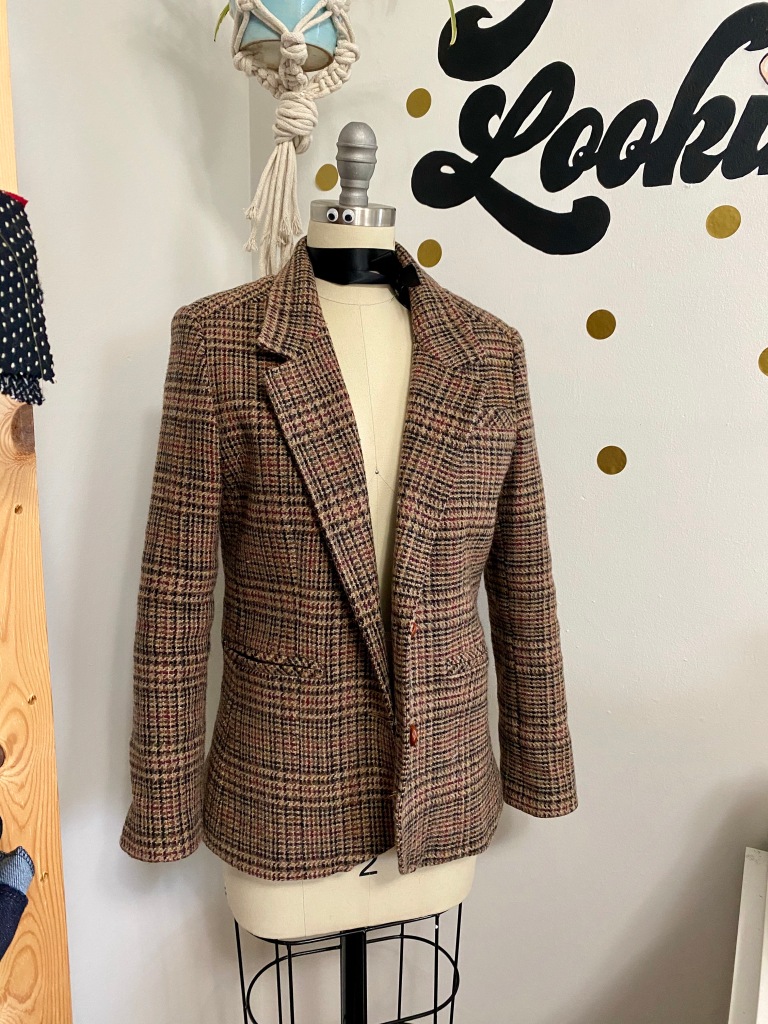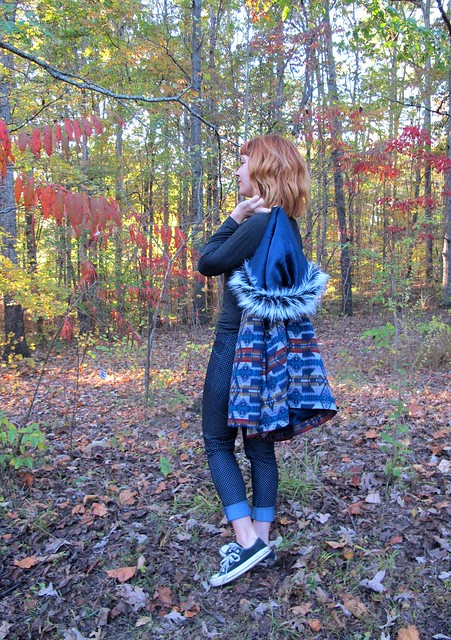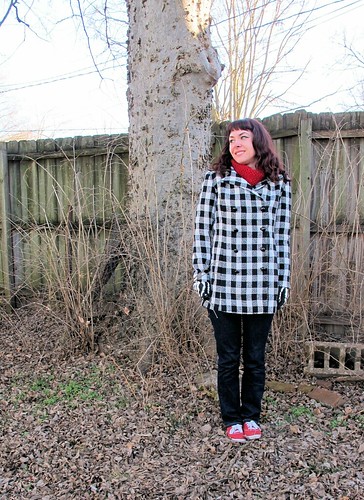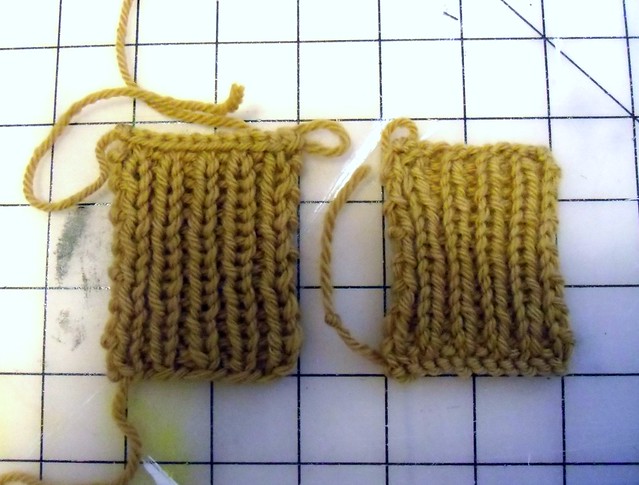
Hey all! Long time no chat 🙂
Don’t expect a return of regular blog posts (sorry! Real talk; this shit took me multiple days to write and I am exhausted lol), but I did want to pop in and talk about my new workshop that I’ve been offering this year. That’s right – I went away for a full 12 months, just to come back around and try to sell y’all some of my crap! HA HA! Wait, come back, I promise this is some interesting quality shit!
As you [probably] already know, I’ve been a sewing teacher for many years – almost a decade, actually (crazy!). I’ve been teaching my Sew Your Own Jeans workshop now for years, and it’s awesome and fun and you should totally believe all the good hype you hear about it. As much as I love making jeans, though, a new sewing skill has entered my repertoire that I just cannot get enough of and I’m dying to share it with everyone! So I created a new one-day workshop, Alter + Repair Your Garments. And today, I’m dusting off this old blog to tell you more about it! And even if you don’t care about my new workshop, I hope that you will at least enjoy the absolute avalanche of photos in this post.



Alterations are a really sensitive subject in the sewing community. We love to say things like “Yes I sew – no I won’t hem your pants.” I’ve seen sewers literally make an entirely new garment, rather than address fit issues in a current garment. Things like seam ripping and making adjustments get a really bad rap in this inner circle. Why is that? I don’t know, but I had a similar attitude up until a few years ago. I would happily upcycle clothes – that’s how I really learned how to sew, by taking weird things from the thrift store and turning them into something even weirder (what can I say? I love weird shit). But I, like many other home sewists, didn’t touch alterations. Until recently, anyway.


I’ve touched on this a little on my blog – and a lot more on Instagram – but I actually do alterations for a living now. I started out as a freelance tailor, which I still do, and I also work part time in a tailor shop that is connected to a high-end clothing store. The tailor shop is stable and occasionally a bit redundant (which I honesty like), and the freelance work is… sometimes redundant, and sometimes just absolutely wild. As a freelance tailor who also lives in Nashville, the majority of my clients are musicians, mainly country and gospel artists. I work closely with my clients and their stylist to get their clothes to do whatever they want them to do. Sometimes that means proper fittings and alterations for things like red carpet events and tour outfits. Sometimes it means I’m sitting in a parking lot with my sewing machine powered by a generator, while I furiously take in something in the absolute shittiest and fastest way possible so they can film a music video. I also do a lot of adjustments to clothing in ways that aren’t traditional alterations – changing the style and fit of a garment (in a way that was not originally intended by the designer), adding or removing elements to make it wearable for performing, or to work with a stylist’s ~vision~. It’s all different and it’s all fun and I love it so much!

My new 1 day workshop, Alter + Repair Your Garments, allows students to dip their toes into the world of alterations and garment changes, with the support of someone who has quite a bit of experience under her belt (that would be me!). This class is a little different than what you might imagine when you think of doing alterations, though. Yes, we can (and we will) cover the basic stuff – hemming pants, taking up sleeves, adjusting waistlines, etc. The not as exciting bits that we like to tell people we don’t do as sewists. It’s totally valid and useful sewing and can be very handy if you think you might want to pursue a career as a tailor, or if you just want to handle your own alterations and save some cash, or in the case of some of my students – to show you the involvement in alterations, and release some of that sewist’s guilt when you realize you’d rather just continue to pay someone else to do it so you can keep your free sewing time entirely selfish and fun!
A big part of alterations, though, is a lot more exciting – the creative problem solving! This is where we take our garment sewing to the next level by changing things that might not be so obvious on the first go. Sometimes it’s a simple fix – shortening a hem, taking in excess. Sometimes it’s more involved, like replacing a zipper or a shredded panel of fabric. Sometimes it’s something really wacky, like making a new neckline or turning a dress into a top. The beautiful thing about sewing is that *most* things can be changed – I mean, it’s all sewn, after all. So go ahead and put pockets in that dress! Chop 6” off the bottom of your jeans and keep that original ratty hem! Dye your favorite sweater to a color that better suits your complexion (ok, no dyeing in this class but we can talk! We can talk!)!


Every class is different, and the curriculum is based on whatever students choose to bring into class. This means you aren’t signing up for a class that teaches you shit you don’t care about – you’re going to bring in your own garments (ready to wear or handmade, vintage or modern, yours or someone else’s! Whatever you want to work on!), and we are going to address those pieces specifically. Some students love the opportunity to watch what everyone else is doing – it’s like extra little bonus lessons! Some students like to bring in an entire pile of clothing and try them all on, chat their way through all the changes and how to do them, and save the actual sewing for home. Some students will just bring a couple big projects, and let their class session focus on finishing them. Some students use class time as an excuse to finally tackle the pile of clothing alterations they’ve been avoiding dealing with. However you decide to treat the class is up to YOU!



This is not a “fitting” class per se – although, most alterations do involve fit. We fit for style, for comfort, for wearability. We are not worried about getting “perfect fit” because that does not exist (and any photos you see without wrinkles? That’s due to the magic of Photoshop and standing completely still in a garment that probably isn’t very comfortable!). A fun bonus effect of this class is that this sort of fitting – on completed, wearable garments – can actually increase your understanding of fit and it’s adjustments on the future garments that you make. Fit adjustments are much more obvious on a finished garment, rather slogging through a book and trying to figure out the strange name that is supposed to describe the wrinkles you see.




As a tailor who works in the entertainment industry, I bring a unique point of view that you might not necessarily find in other classes. I’m not afraid to do something wild to a garment if I think it will improve it in some way. I love using elastic to sneakily take things in, and I’m a huge fan of turning mistakes into design elements. My goal for this class is to teach students how to approach this in a systematic way that makes sense and can be replicated with any garment, not just the pile you worked on in class. Of course, I want you to leave with a pile of pieces that you definitely will wear now – but I also want you to leave equipped with the knowledge and confidence to do this on your own, too!






Alter + Repair Your Garments is perfect for any sewist who wants to improve their sewing, as well as learn a whole new range of skills. Do you have a pile of clothes in your closet that you don’t wear, but you also can’t quite figure out why? You need this class. Do you want to be able to smugly tell those acquaintances who ask you to sew for them “Actually, yes I do know how to do that type of hem – but sorry, I don’t sew for other people :]”? This is your class, baby! Have you taken my jeans class and you just really want to hang out with me again but you are good with all things denim? COME ON DOWN AND SEE ME, MY FRIEND!
You do *not* need to be a sewing super star to take this class! I wouldn’t recommend this class to an absolute beginner – you should have a little experience under your belt, a general understanding of the basics of clothing construction, and be comfortable using a machine. But you know what the other beauty about alterations is? There’s the easy way, and there’s the “proper” way. And you get to choose the method you want to use (because those are your damn clothes and there aren’t any sewing police!)! From adventurous beginners to seasoned pros – I truly believe this is a class for everyone!


Here are some things you can expect to learn in this one day workshop:
- Effective seam ripping techniques for a variety of stitches, including straight stitches, serged finishes, and chainstitches
- How to assess a garment’s fit and style, and how to determine what changes need to be made
- How to pin fit a garment and transfer the adjustments in preparation for sewing
- How to take apart a garment, look inside, and determine the best method for executing whatever adjustment needs to be made based on the construction of the original garment
- Basic garment repair
- How to determine whether a garment can successfully be altered or repaired,
- Best practices for using trial-and-error to approach for alterations on existing garments, and how to troubleshoot any problems that may arise




A couple notes on what *not* to expect in this class – we are working on finished garments only, so no muslins and we will not cover flat pattern adjustments (that’s an entirely different class, one that your local sewing shop likely already offers!). We cannot work on specialty (or messy) materials, such as leather, sequins, or fur. Pls leave that shit at home!


Altering your clothes to better suit your body, style, and comfort needs is truly the most sustainable way to sew. In this class, I hope to show you how to see flaws in garments as exciting opportunities for improvement. Whether you are buying used or new clothes that need a little tweaking, or perfecting the fit + style finish on your own handmade goods (side note: *most* of my handmade clothes go through at least one round of alterations after they are finished! This is totally normal – even with a preliminary muslin fitting, clothes are going to fit different when you wear them out and around vs standing in front of a mirror with a shell made of a stiff fabric), the possibilities are endless and exciting!

Don’t worry – I’m still teaching my Sew Your Own Jeans workshops (got a lot more butts I need to touch!). I will be offering Alter + Repair Your Garments in tandem with the weekend dates of my Sew Your Own Jeans workshops. I’m finalizing my 2023 workshop dates right now and will be announcing them soon – stay tuned! Can’t wait until 2023? There are still a couple seats left at Domesticity (Baltimore, MD) and Papermaple Studio (New Orleans, LA)!
For more information on my Alter + Repair Your Garments workshop, check out this interview I did with Workroom Social earlier this year.
For a list of all my upcoming workshops – check out my WORKSHOPS page.






















































































































